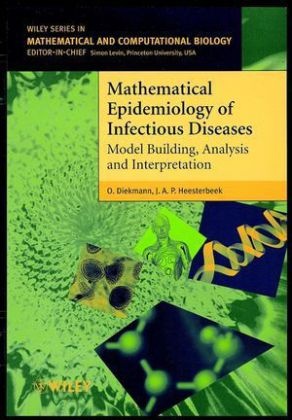Read more
The mathematical modelling of epidemics in populations is a vast and important area of study. It is about translating biological assumptions into mathematics, about mathematical analysis aided by interpretation and about obtaining insight into epidemic phenomena when translating mathematical results back into population biology. Model assumptions are formulated in terms of, usually stochastic, behaviour of individuals and then the resulting phenomena, at the population level, are unravelled. Conceptual clarity is attained, assumptions are stated clearly, hidden working hypotheses are attained and mechanistic links between different observables are exposed. Features: Model construction, analysis and interpretation receivedetailed attention Uniquely covers both deterministic and stochastic viewpoints Examples of applications given throughout Extensive coverage of the latest research into the mathematical modelling of epidemics of infectious diseases Provides a solid foundation of modelling skills. The reader will learn to translate, model, analyse and interpret, with the help of the numerous exercises. In literally working through this text, the reader acquires modelling skills that are also valuable outside of epidemiology, certainly within population dynamics, but even beyond that. In addition, the reader receives training in mathematical argumentation. The text is aimed at applied mathematicians with an interest in population biology and epidemiology, at theoretical biologists and epidemiologists. Previous exposure to epidemic concepts is not required, as all background information is given. The book is primarily aimed at self-study and ideally suited for small discussion groups, or for use as a course text.
List of contents
THE BARE BONES: BASIC ISSUES EXPLAINED IN THE SIMPLEST CONTEXT
The Epidemic in a Closed Population.
Heterogeneity: The Art of Averaging.
Dynamics at the Demographic Time scale.
STRUCTURED POPULATIONS.
The Concept of State.
The Basic Reproduction Ratio.
And Everything else...
Age Structure.
Spatial Spread.
Macroparasites.
What is Contact?
THE HARD PART: ELABORATIONS TO (ALMOST) ALL EXERCISES.
Elaborations for Part I.
Elaborations for Part II.
Appendices.
Index.
Report
"this is a very well-written book...."(Int. Jnl of Epidemiology, Vol. 30/1, 2001) "The extensive exercises make the book suitable not only for courses in modeling, but also for self-study by epidemiologists, mathematicians, and statisticians." (SIAM Review, Vol. 43, No. 4) "An attractive feature is that over one-third of the book is devoted to worked-out answers to the exercises" (Society for Industrial & Applied Mathematics Review. Vol. 43 No.4. 2001)

